
Chapter 4 Eukaryotic Microorganisms
Chapter 4 Eukaryotic Microorganisms
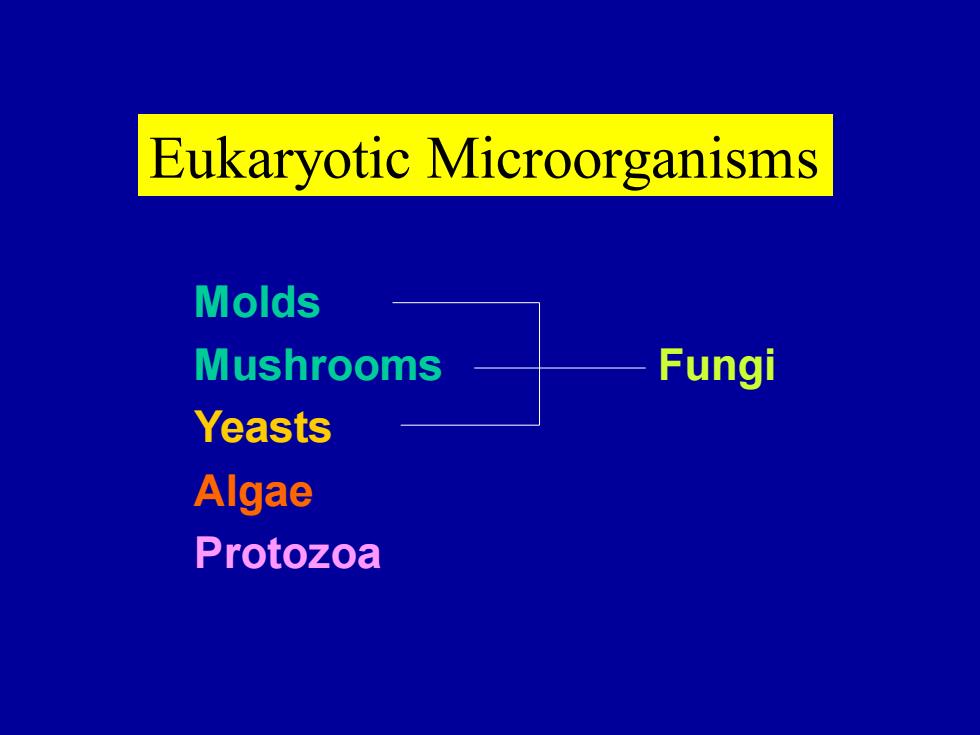
Molds Mushrooms Fungi Yeasts Algae Protozoa Eukaryotic Microorganisms
Molds Mushrooms Fungi Yeasts Algae Protozoa Eukaryotic Microorganisms
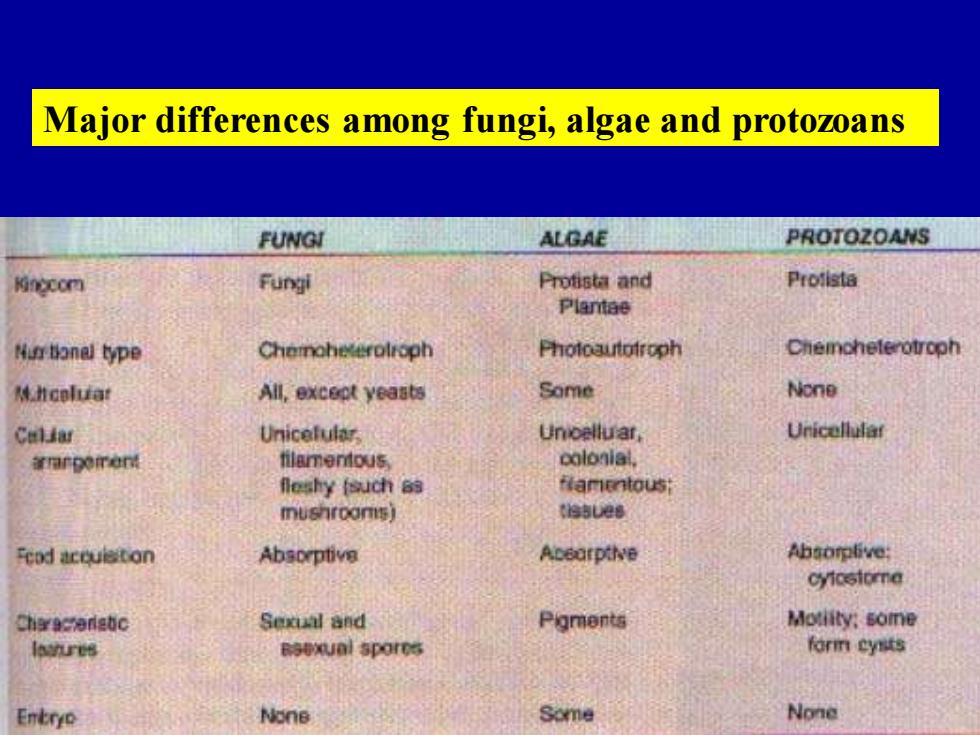
Major differences among fungi, algae and protozoans
Major differences among fungi, algae and protozoans
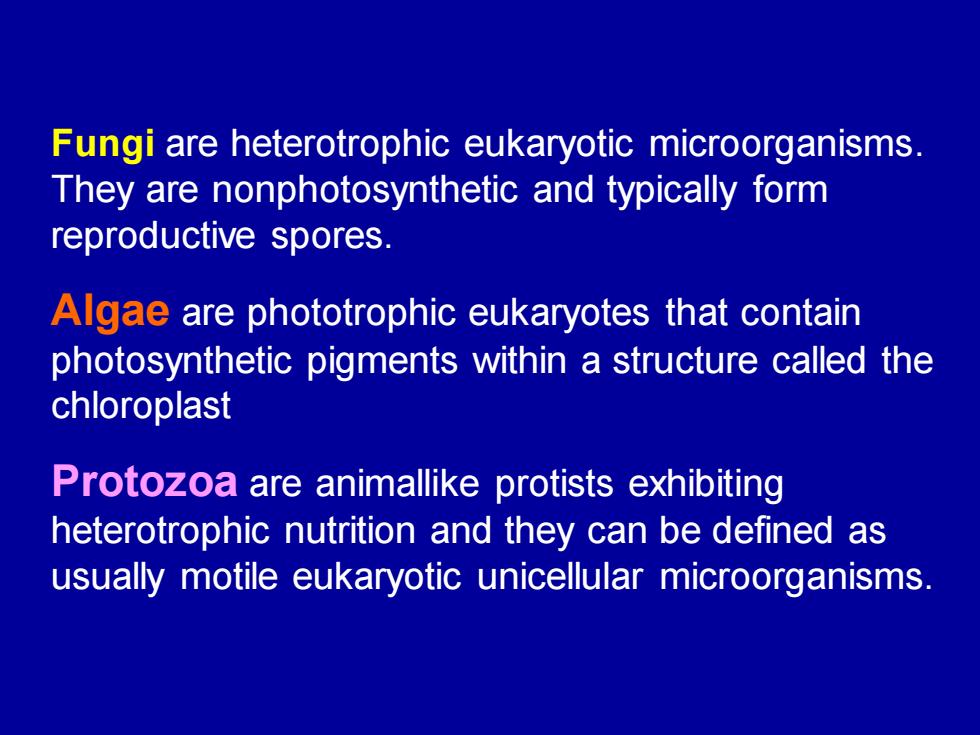
Fungi are heterotrophic eukaryotic microorganisms. They are nonphotosynthetic and typically form reproductive spores. Algae are phototrophic eukaryotes that contain photosynthetic pigments within a structure called the chloroplast Protozoa are animallike protists exhibiting heterotrophic nutrition and they can be defined as usually motile eukaryotic unicellular microorganisms
Fungi are heterotrophic eukaryotic microorganisms. They are nonphotosynthetic and typically form reproductive spores. Algae are phototrophic eukaryotes that contain photosynthetic pigments within a structure called the chloroplast Protozoa are animallike protists exhibiting heterotrophic nutrition and they can be defined as usually motile eukaryotic unicellular microorganisms
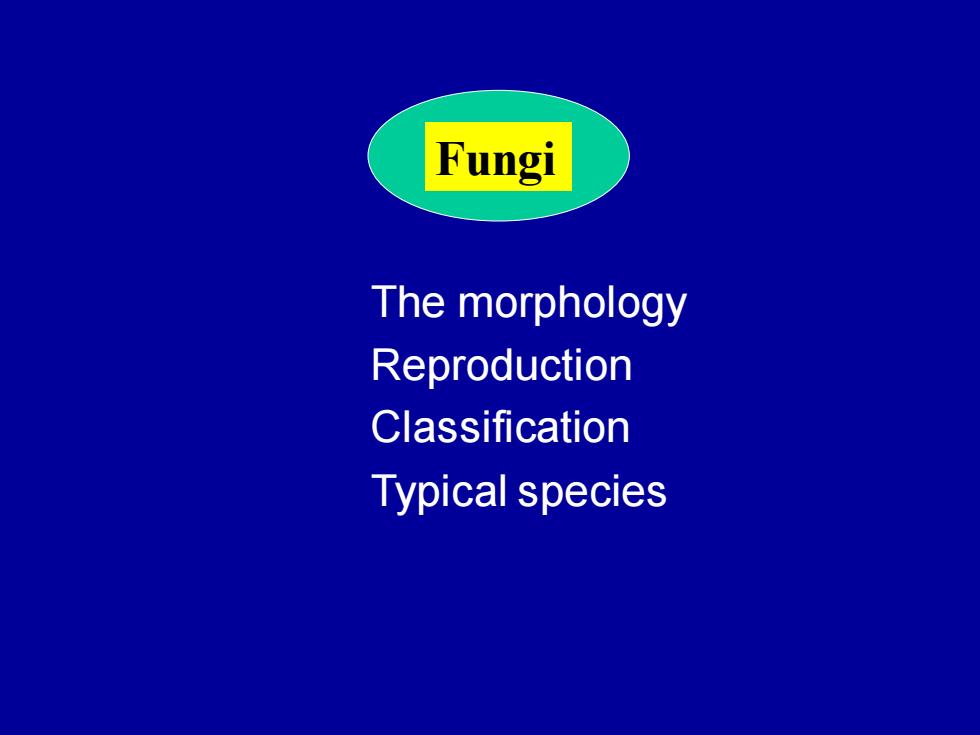
The morphology Reproduction Classification Typical species Fungi
The morphology Reproduction Classification Typical species Fungi
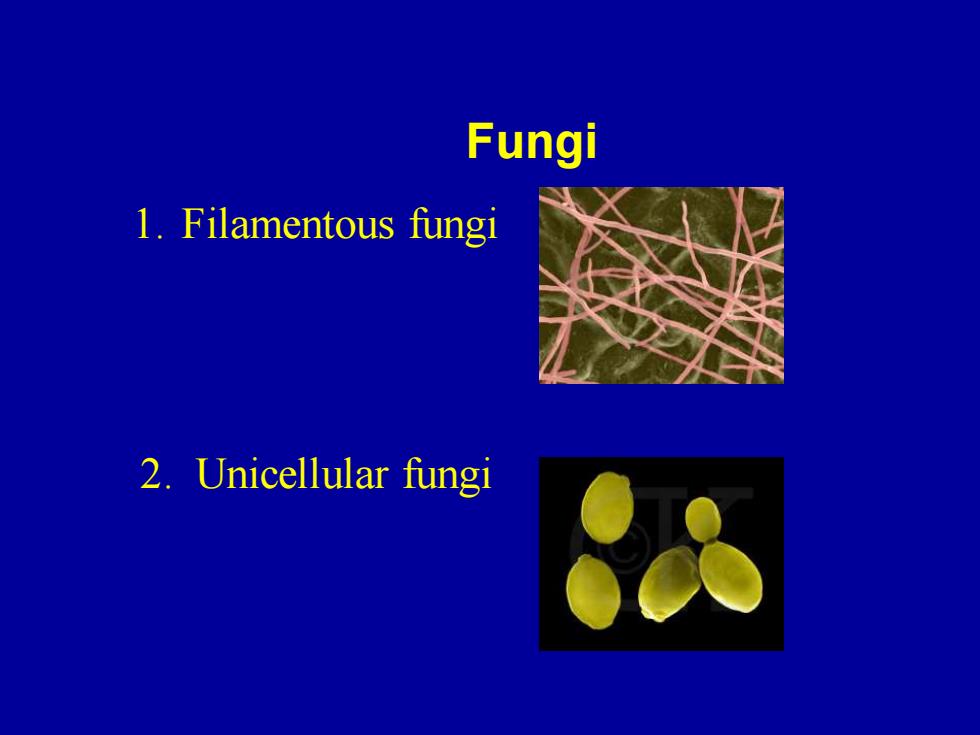
Fungi 1. Filamentous fungi 2. Unicellular fungi
Fungi 1. Filamentous fungi 2. Unicellular fungi
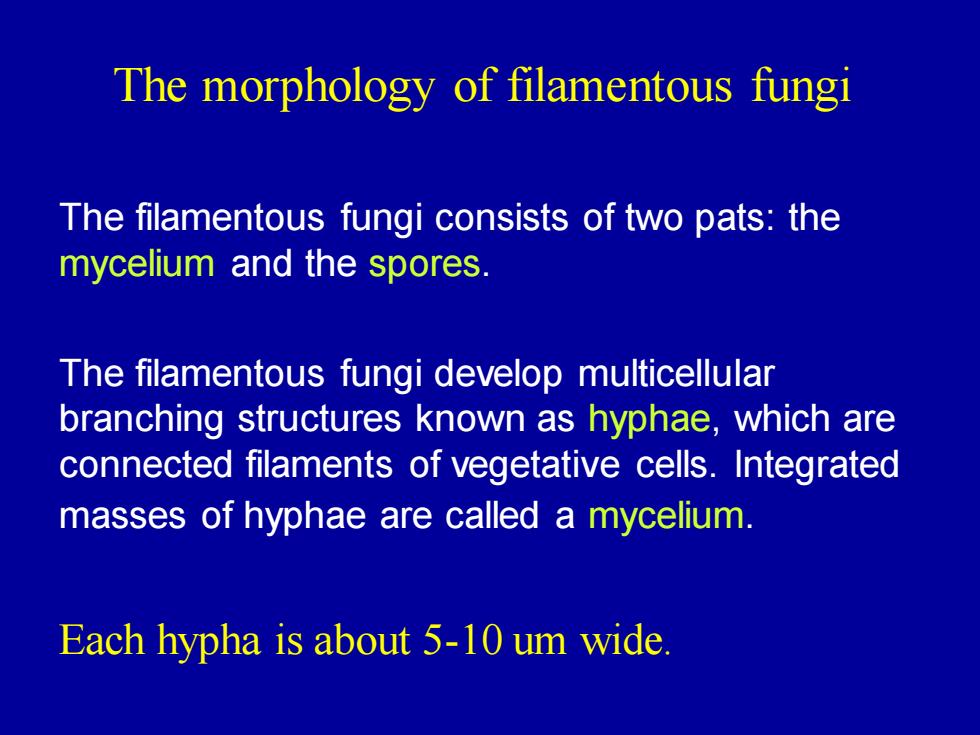
The morphology of filamentous fungi The filamentous fungi consists of two pats: the mycelium and the spores. The filamentous fungi develop multicellular branching structures known as hyphae, which are connected filaments of vegetative cells. Integrated masses of hyphae are called a mycelium. Each hypha is about 5-10 um wide
The morphology of filamentous fungi The filamentous fungi consists of two pats: the mycelium and the spores. The filamentous fungi develop multicellular branching structures known as hyphae, which are connected filaments of vegetative cells. Integrated masses of hyphae are called a mycelium. Each hypha is about 5-10 um wide
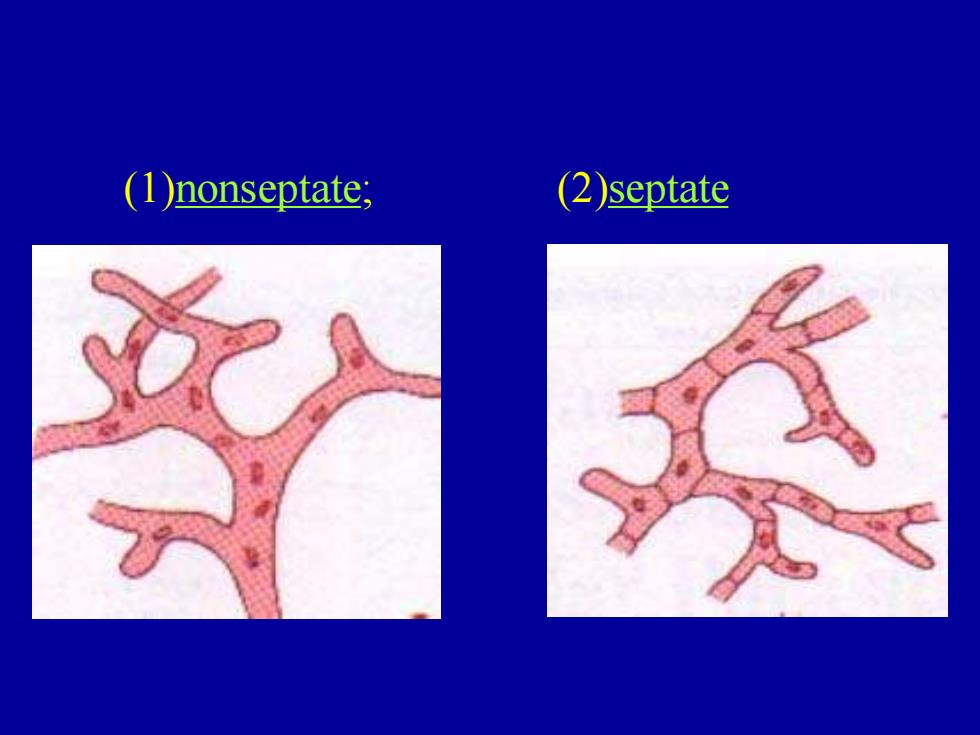
(1)nonseptate; (2)septate
(1)nonseptate; (2)septate
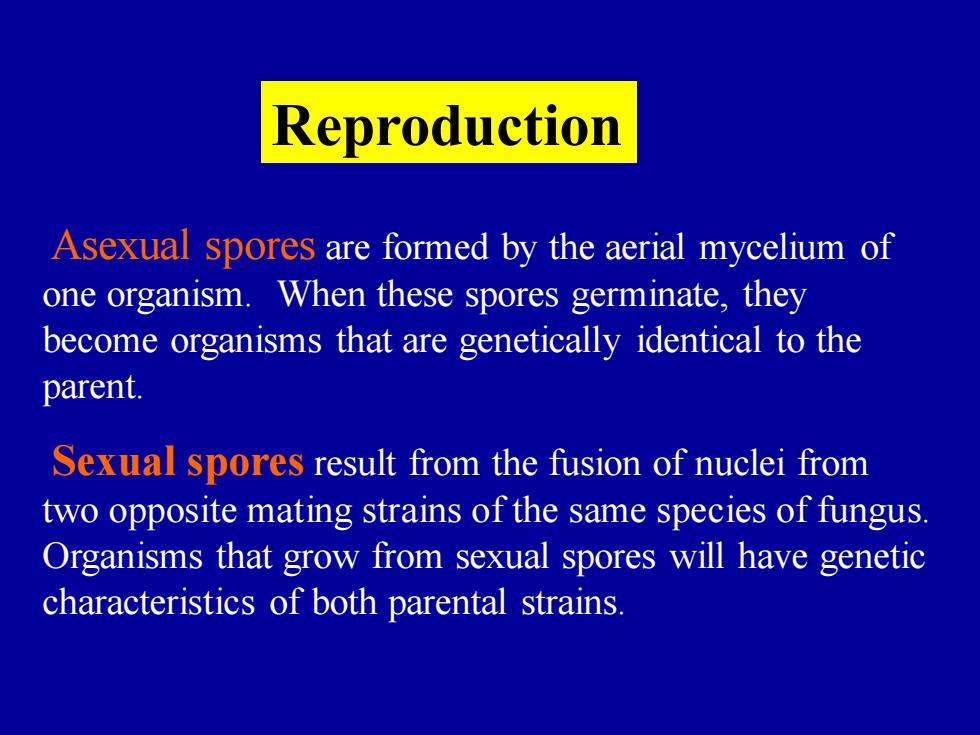
Reproduction Asexual spores are formed by the aerial mycelium of one organism. When these spores germinate, they become organisms that are genetically identical to the parent. Sexual spores result from the fusion of nuclei from two opposite mating strains of the same species of fungus. Organisms that grow from sexual spores will have genetic characteristics of both parental strains
Reproduction Asexual spores are formed by the aerial mycelium of one organism. When these spores germinate, they become organisms that are genetically identical to the parent. Sexual spores result from the fusion of nuclei from two opposite mating strains of the same species of fungus. Organisms that grow from sexual spores will have genetic characteristics of both parental strains
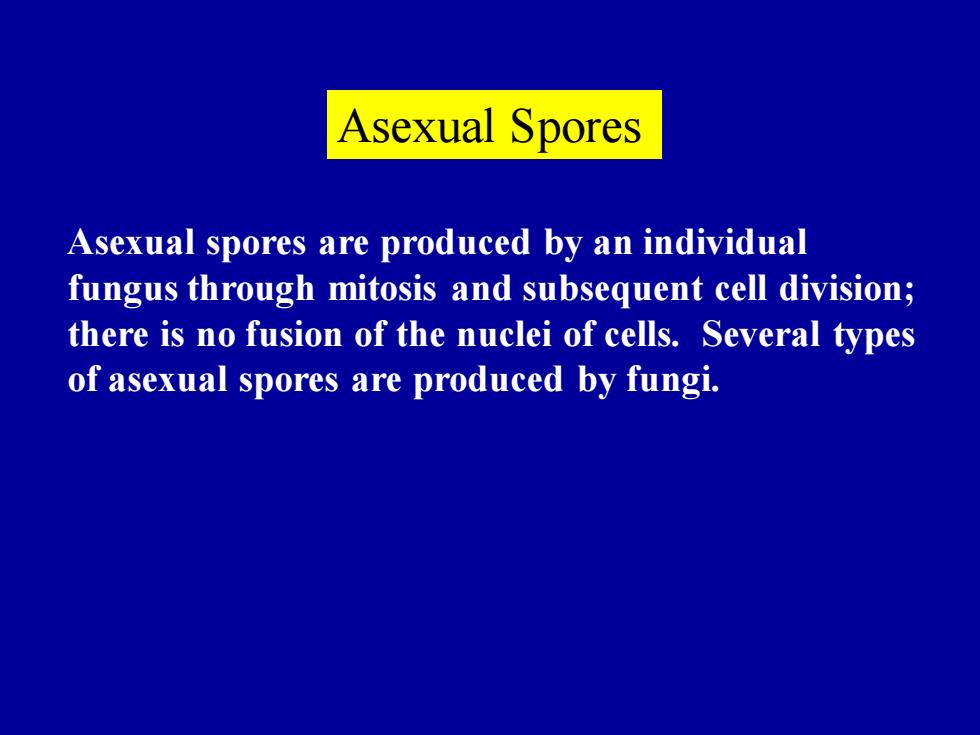
Asexual spores are produced by an individual fungus through mitosis and subsequent cell division; there is no fusion of the nuclei of cells. Several types of asexual spores are produced by fungi. Asexual Spores
Asexual spores are produced by an individual fungus through mitosis and subsequent cell division; there is no fusion of the nuclei of cells. Several types of asexual spores are produced by fungi. Asexual Spores